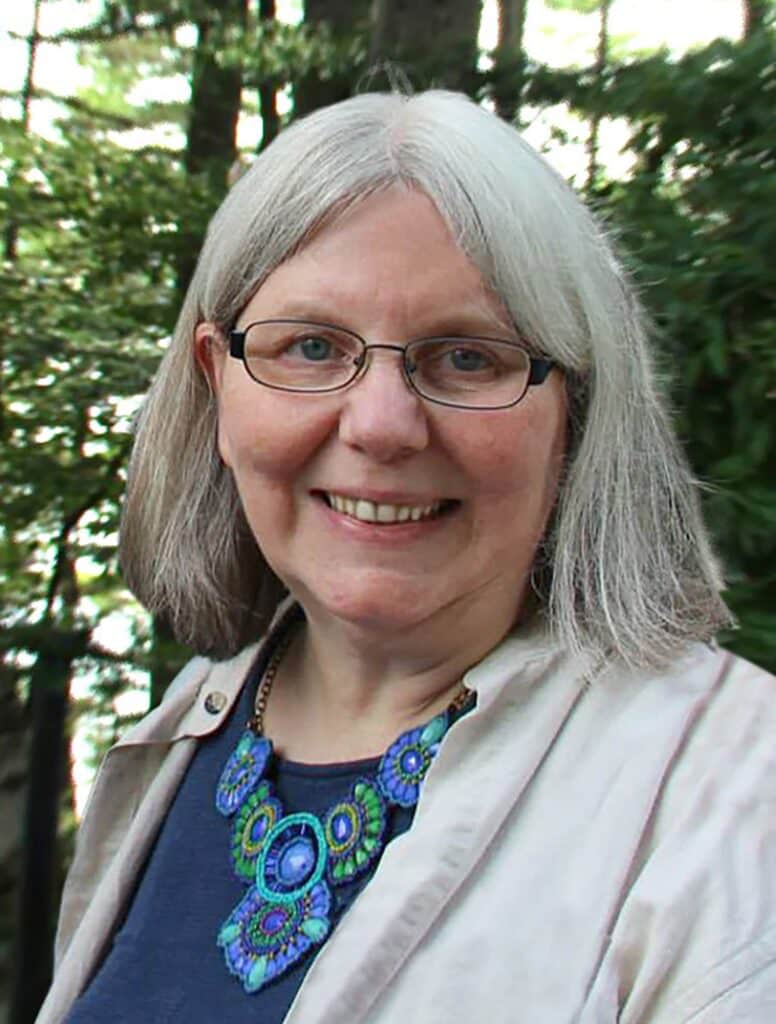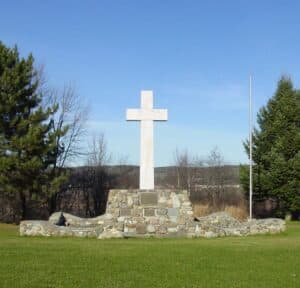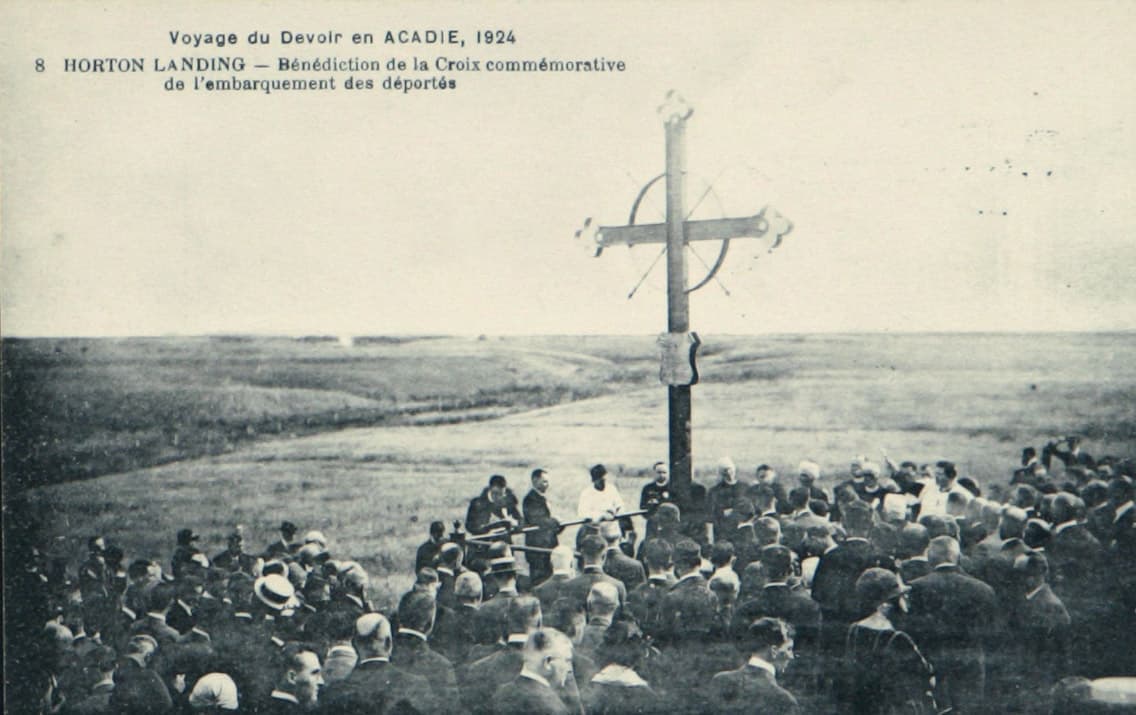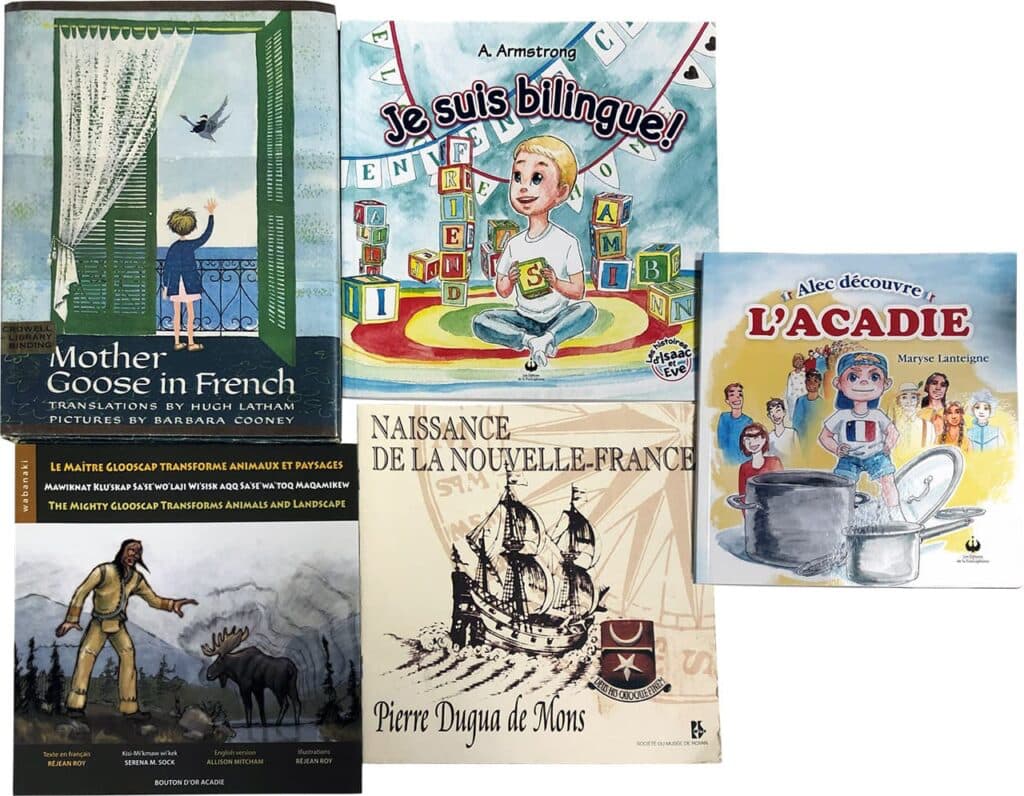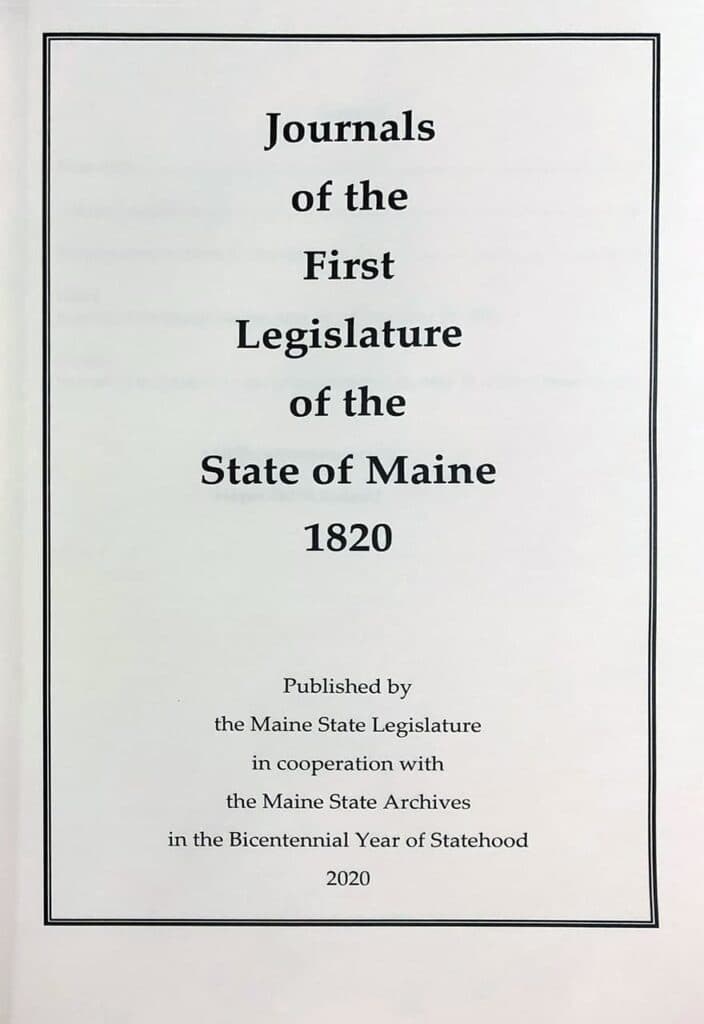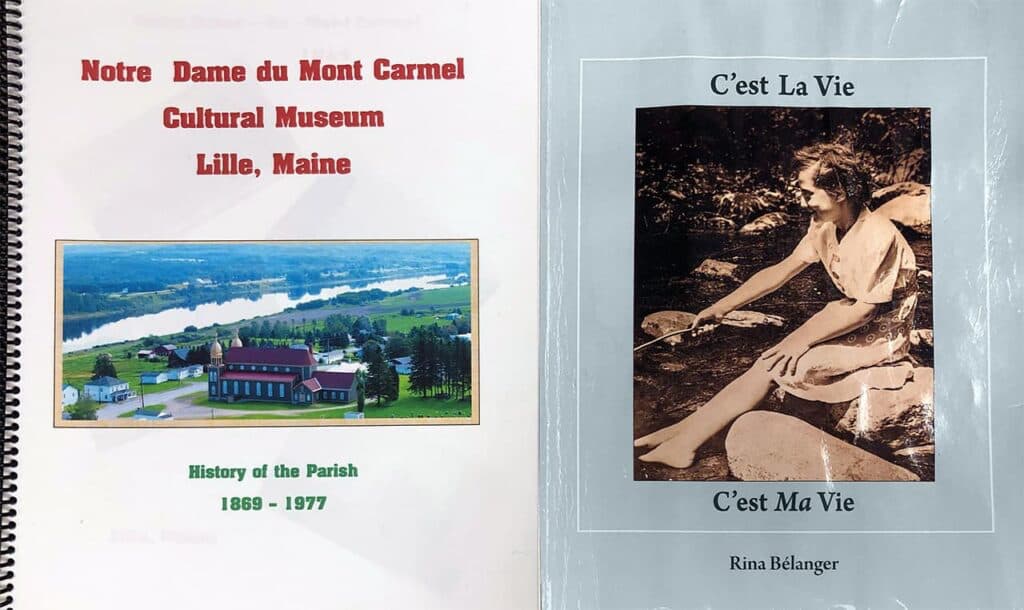Beginning in 1755, British colonial leaders forcibly removed thousands of Acadians from their homes in what are today the Canadian provinces of Nova Scotia, New Brunswick, and Prince Edward Island. Many Acadians were dispersed in Britain’s North American colonies; others were imprisoned in Halifax or sent to Europe. Yet more families escaped and found refuge in the St. Lawrence River valley. The deportation created a cycle of migrations that would last into the 1780s. Through this process, a people that had numbered 14,000—concentrated in the Bay of Fundy region and wishing to stay aloof of imperial rivalries—melted into small diasporic communities, isolated from one another, that spanned the length and breadth of the Atlantic Ocean.
To accompany the springtime lecture series on Acadian history, the Archives team is pleased to provide excerpts of documents that help trace how and why the Deportation occurred. This very small sample appears in Selections from the Public Documents of the Province of Nova Scotia: Papers Relating to the Acadian French 1714-1755 and Papers Relating to the Forcible Removal of the Acadian French from Nova Scotia, 1755-1768, edited by Thomas B. Akins (Halifax: Charles Annand, 1869). These works are available on the Nova Scotia Archives’ Acadian Heartland: Records of the Deportation and Le Grand Dérangement, 1714-1768.
The first two documents below present the dilemmas facing both the Acadians and their new British rulers. Although entitled to move to the French colony of Ile Royale (Cape Breton), Acadians wished to do so only upon finding purchasers for their land and their goods; colonial authorities, meanwhile, worried about the consequences of their departure. After many colonists had signed a conditional oath of loyalty in the 1720s, British leaders resorted to a system of deputies and allowed the expansion of Acadian settlements. The later documents reflect the challenge of remaining neutral between French demands for aid and British expectations of unconditional loyalty.
We have maintained as much as possible the original spelling. Please note that the documents contain terms that are no longer in use and that we would today find offensive.
Document Excerpts
Colonel Samuel Vetch to England’s Lords of Trade, November 24, 1714
As to the 4th [query,] what may be the consequence of the French [Acadians] moving from Nova Scotia to Cape Bretton; They are evidently these, First their leaving that country intirely destitute of inhabitants: There being none but French, and Indians (excepting the Garrison) settled in those parts; and as they have intermarried, with the Indians, by which and their being of one Religion, they have a mighty influence upon them. So it is not to be doubted, but they will carry along with them to Cape Bretton both the Indians and their trade, Which is very considerable. And as the accession of such a number of Inhabitants to Cape Bretton, will make it at once a very populous Colony; (in which the strength of all the Country’s consists) So it is to be considered, that one hundred of the French, who were born upon that continent, and are perfectly known in the woods; can march upon snow shoes; and understand the use of Birch Canoes are of more value and service than five times their number of raw men, newly come from Europe. So their skill in the Fishery, as well as the cultivating of the soil, must inevitably make that Island [Cape Breton], by such an accession of people, and French, at once the most powerful colony, the French have in America. And of the greatest danger and damage to all the British Colon[ie]s as well as the universal trade of Great Britain . . .
As to the next question, which relates to the time of the French’s removing from Nova Scotia, with their effects: I am informed, several of them, who have no very great substance, are already removed thither, this summer; and that the rest design to do so next summer, as soon as their harvest is over, and grain got in . . . The consequences of which are evidently these: First, It will Intirely strip that Colony, of the above cattle of all sorts, and reduce it to its primitive state; To replenish which at the same rate (it now is from New England the nearest Colony to it, which is one hundred and ten leagues) at a moderate computation of freight, only for the transportation of such a number of Black Cattle, and a proportionable number of Sheep and Hoggs, will cost above Forty thousand pounds; besides the long time it will require to stock that country . . .
Letter of the Acadians to the Governor, May 1720
[I]nasmuch as you demand from us an oath which is so much the more burdensome as we should expose both ourselves and our families to the fury of the savages, who threaten us every day and watch all our proceedings in order to assure themselves that we are not violating the oath taken in presence of General Nicholson and two officers from Isle Royale. This oath is known to the courts of England and France, and it appears to us very difficult to relieve ourselves from the conditions it imposes. And if we should happen not to keep our promise to our invincible monarch, we would have nothing to expect but punishment from the threatening hand of the savages.
Nevertheless Sir we promise you that we shall be equally as faithful as we have hitherto been and that we shall not commit any act of hostility against any right of his Britannic Majesty, so long as we shall continue to remain within the limits of his dominions. You reproach us Sir in the proclamation with having remained on our property more than the year stipulated in the articles of peace. We have the honor to reply that it was impossible for us to do otherwise for the following reason, that although permission to sell our real estate was granted to us, yet we have not been able to do so not having yet found a purchaser; the above privilege therefore has been useless to us.
Lt. Gov. Lawrence Armstrong to the Lords of Trade, October 5, 1731
[The Acadians] are a very ungovernable people and growing very numerous, and the method of treating with them upon any subject, is by their deputies . . . they in time may be perhaps brought through their own free and voluntary acts to pay a greater obedience to the government, and contribute to its support [through taxation], and as civil magistrates are much wanted, I entreat Your Lordships [for] directions for appointing at least some justices of the peace, and other inferior officers amongst them . . .
I have signified to Your Lordships, that there [are] several people who have petitioned for grants; some of them are for small plots, in and adjacent to this town . . . but especially by several young people who have settled themselves, some years ago, at a place called Chippody in the Bay, not far from Chickenectua [Chignecto], where, if upon the surveyors’ report there is no woods proper for masting [for the English navy], I presume grants may be made out for the same, without being interpreted a breach of any article of the instructions.
François Du Pont Duvivier’s Order to the Acadians, August 27, 1744
We captain of infantry, commanding the troops detached for the enterprise of Port Royal . . . declare in the King [of France]’s name, as follows —
The [Acadian] inhabitants of Mines comprising the parishes of Grand Pre, River Canard, Piziquid and Cobequid, are ordered to acknowledge the obedience they owe to the King of France, and in consequence the said parishes are called upon for the following supplies: that of Grand Pre, eight horses and two men to drive them: that of the River Canard, eight horses and two men to drive them: and that of Piziquid, twelve horses, and three men to drive them: as also the powder horns possessed by the said inhabitants, one only being reserved for each house. The whole of the above must be brought to me at ten o’clock on Saturday morning at the french flag which I haye had hoisted, and under which the deputies from each of the said parishes shall be assembled, to pledge fidelity for themselves and all the inhabitants of the neighbourhood who shall not be called away from the labours of the harvest. All those for whom the pledge of fidelity shall be given will be held fully responsible for said pledge, and those who contravene the present order shall be punished as rebellious subjects, and delivered into the hands of the savages as enemies of the state, as we cannot refuse the demand which the savages make for all those who will not submit themselves. We enjoin also upon those inhabitants who have acknowledged their submission to the King of France to acquaint us promptly with the names of all who wish to screen themselves from the said obedience, in order that faithful subjects shall not suffer from any incursions which the said savages may make.
Answer of the Acadians of Mines to Captain Michel de Gannes’ Order, October 10, 1744
We the undersigned humbly representing the inhabitants of Mines, river Canard, Piziquid, and the surrounding rivers, beg that you will be pleased to consider that while there would be no difficulty by virtue of the strong force which you command, in supplying yourself with the quantity of grain and meat that you and M. Du Vivier have ordered, it would be quite impossible for us to furnish the quantity you demand, or even a smaller, since the harvest has, not been so good as we hoped it would be, without placing ourselves in great peril.
We hope gentlemen that you will not plunge both ourselves and our families into a state of total loss; and that this consideration will cause you to withdraw your savages and troops from our districts.
We live under a mild and tranquil government, and we have all good reason to be faithful to it. We hope therefore, that you will have the goodness not to separate us from it; and that you will grant us the favour not to plunge us into utter misery.
Jacques Leblanc
Pierre Leblanc
François Leblanc
Renne [ X ] Grange Senr.
Claude Leblanc
Jacques Terriot
Antoine Landry
Pierre Richard Senr.
Joseph [ X ] Granger
R. Leblanc
Response to the Acadian Deputies in the Proceedings of the Colonial Council, Halifax, May 25, 1750
My friends, the moment that you declared your desire to leave and submit yourselves to another government, our determination was to hinder nobody from following what he imagined to be his interest. We know that a forced service is worth nothing and that a subject compelled to be so against his will, is not very far from being all enemy.
We frankly confess, however, that your determination to leave gives us pain.
We are well aware of your industry and your temperance, and that you are not addicted to any vice or debauchery. This province is your country; you or your fathers have cultivated it; naturally you ought yourselves to enjoy the fruits of your labour. Such was the design of the king our master. You know that we have followed his orders. You know that we have done everything to secure to you not only the occupation of your lands, but the ownership of them forever.
We have given you also every possible assurance of the enjoyment of your religion, and the free and public exercise of the Roman Catholic religion . . .
In your petitions, you ask for a general leave. As it is impossible that you could all meet at a certain rendezvous in order to set out all together, with all your families, one must understand by the expression “congé général” a general permission to set out whenever you shall think proper, by land, or by sea, or by whatever conveyances you please. In order to effect this, we should have to notify all the commanders of his majesty’s ships and troops to allow everyone to pass and repass, which would cause the greatest confusion. The province would be open to all sorts of people, to strangers and even to the savages. They have only to dress themselves like you in order to render it difficult to distinguish them from you.
The only manner in which you can withdraw from this province, is to follow the regulations already established. The order is, that all persons wishing to leave the province, shall provide themselves with our passport, to be shown to the vessels or troops they may meet. And we declare that nothing shall prevent us from giving such passports to all those who ask for them, the moment that peace and tranquility are reestablished in the province.
Proceedings of the Colonial Council, Halifax, July 28, 1755
The said [Acadian] deputies were then called in, and [they] peremptorily refused to take the oath of allegiance to his majesty . . . [w]hereupon they were all ordered into confinement.
As it had been before determined to send all the French inhabitants out of the province if they refused to take the oaths, nothing now remained to be considered but what measures should be taken to send them away, and where they should be sent to.
After mature consideration, it was unanimously agreed that, to prevent as much as possible their attempting to return and molest the [English] settlers that may be set down on their lands, it would be most proper to send them to be distributed amongst the several colonies on the continent, and that a sufficient number of vessels should be hired with all possible expedition for that purpose.
Further Reading
The Acadian Archives are home to a wealth of published resources on the Deportation. The following English-language works, which provide an overview of this dramatic chain of events, are a small sample of that collection. For additional information or to schedule an appointment, please reach us at acadian@maine.edu or by phone at 207-834-7535.
- Faragher, John Mack, A Great and Noble Scheme: The Tragic Story of the Expulsion of the French Acadians from Their American Homeland (2005).
- Griffiths, N. E. S., ed., The Acadian Deportation: Deliberate Perfidy or Cruel Necessity? (1969).
- Griffiths, N. E. S., From Migrant to Acadian: A North American Border People, 1604-1755 (2005).
- Hodson, Christopher, The Acadian Diaspora: An Eighteenth-Century History (2012).
- Plank, Geoffrey, An Unsettled Conquest: The British Campaign Against the People of Acadia (2001).


